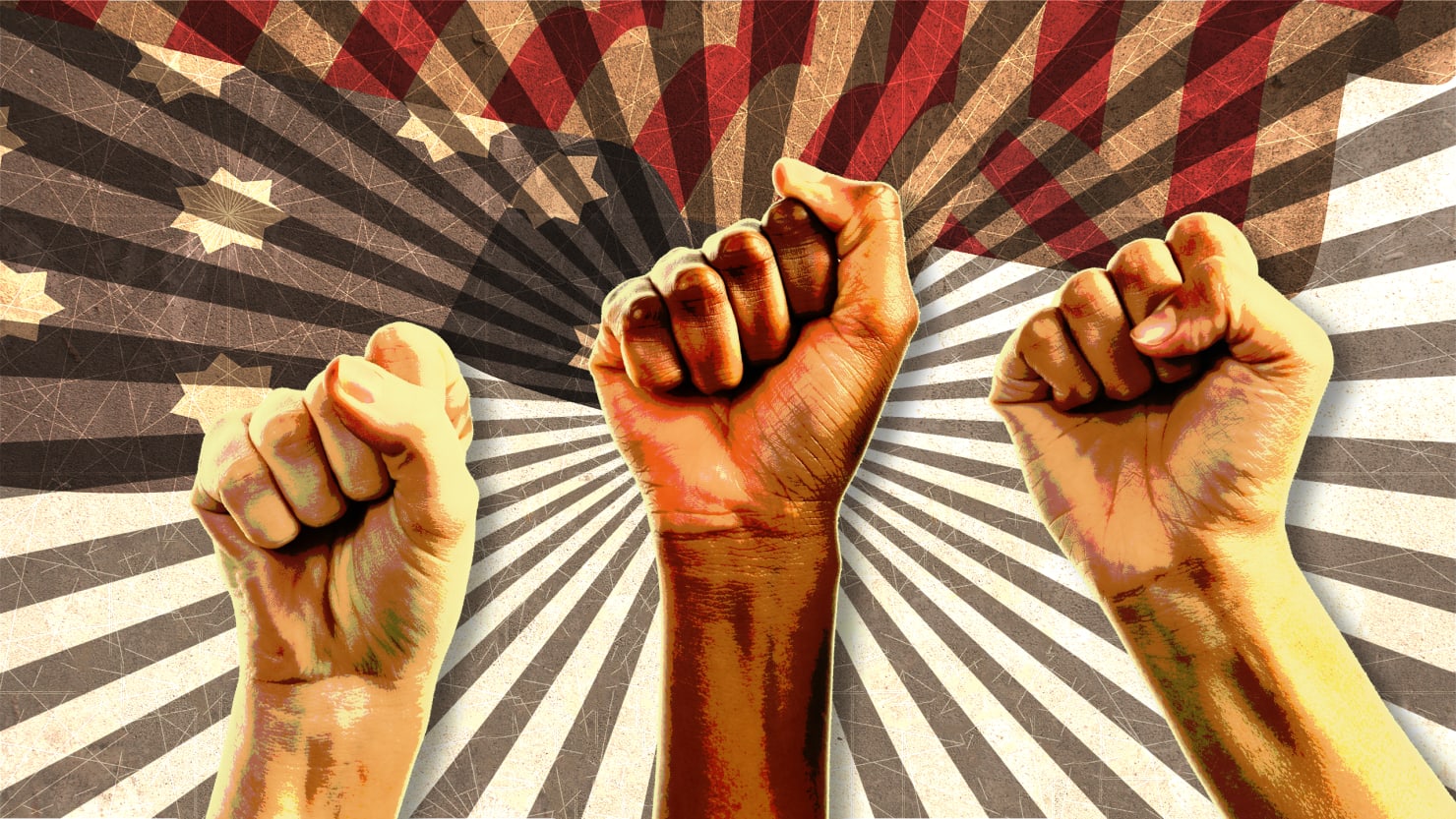Gavin McInnes and the Proud Boys: Misogyny, Authoritarianism, and the Rise of Multiracial White SupremacyPosted in Audio, Interviews, Law, Media Archive, Politics/Public Policy, United States on 2018-10-22 23:12Z by Steven |
The Takeaway
WNYC Studios, New York, New York
2018-10-16
Tanzina Vega, Host
 Gavin McInnes is surrounded by supporters after speaking at a rally Thursday, April 27, 2017, in Berkeley, Calif. McInnes, co-founder of Vice Media and founder of the pro-Trump “Proud Boys,” ( AP Photo ) |
Gavin McInnes, alt-right leader and founder of the far-right group the Proud Boys, was invited to speak at the Metropolitan Republican Club on Manhattan’s Upper East Side this past weekend. In advance of his appearance, McInnes promised to reenact the 1960 assassination of Japanese socialist Inejiro Asanuma, posing in photos depicting ugly Asian caricatures.
His presence drew crowds of both protesters and right-wing counter-protesters to the event, and violence erupted late Friday night. Several cell phone videos show groups of uniformed Proud Boys bragging about the assaults, and NYPD released footage of a protester throwing a bottle at McInnes’ supporters.
The Proud Boys fit into an American tradition of far-right hate groups, but the Internet has enabled disparate groups from all across the country to find support in their message of “western chauvinism.” Also interestingly, the Proud Boys seem to have an ability to attract men of color, which seems at odds with groups that borrow heavily from a white supremacist ideology.
Tanya Hernández, professor of law at Fordham University and the author of the forthcoming book Multiracials and Civil Rights[: Mixed-Race Stories of Discrimination], and David Neiwert, author of Alt-America: The Rise of the Radical Right in the Age of Trump, and correspondent for the Southern Poverty Law Center, join the program to help make sense of this current phenomenon.
Listen to the story here. Download the story (00:11:53) here.





